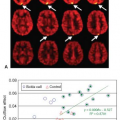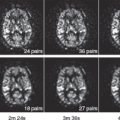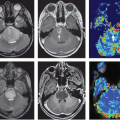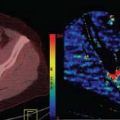Response Evaluation Criteria in Solid Tumors (Recist) and World Health Organization (Who) Criteria for Cancer Progression
Syed Mahmood
Saleha Sajid
History of the World Health Organization Criteria
The effectiveness of anticancer agents is best evaluated by measuring changes in tumor size. Assessing the change in tumor burden is critical in the clinical evaluation of a cancer therapeutic agent. Both tumor shrinkage (objective response) and disease progression are meaningful endpoints in clinical trials.1 After meetings on the standardization of reporting results of cancer treatment in 1977 and 1979, the World Health Organization (WHO) proposed the first standardized criteria for assessing tumor response using bidimensional lesion measurements to determine change in tumor size during treatment in 1981.2
Salient Features of World Health Organization Criteria
WHO recommended standardized criteria to measure baseline tumor lesions, objective response, overall response, and response duration in patients receiving anticancer agents. These criteria became widely accepted as the WHO tumor response criteria and consisted of the following features:
Measurability of baseline lesions:
Measureable bidimensional diameter (product of longest diameter [LD] and greatest perpendicular diameter)
Nonmeasureable (lymphatic pulmonary metastasis, abdominal lesions)
Objective response:
For measurable disease (change in sum of products of the LDs and greatest perpendicular diameters):
Complete response (CR): disappearance of all known disease at ≥4 weeks
Partial response (PR): ≥50% decrease from baseline at ≥4 weeks
Progressive disease (PD): ≥25% increase in size of one or more lesions, or appearance of new lesions
No change (NC): do not meet PR or PD criteria
For nonmeasurable disease:
CR: disappearance of all known disease at ≥4 weeks
PR: estimated decrease of ≥50% lesion size at ≥4 weeks
PD: estimated increase of ≥25% lesion size or appearance of new lesions
NC: do not meet PR or PD criteria
Overall response (OR):
Best overall response recorded in disease measured
NC in nonmeasurable lesions will reduce a CR in measurable lesions to an overall PR
NC in nonmeasurable lesions will not reduce a PR in measurable lesions
Response duration:
CR: From date CR criteria met to date PD first noted
OR: From date of treatment initiation to date PD first noted
In patients with PR, only period of OR should be recorded
Future Directions in World Health Organization Criteria
The WHO criteria, being the first criteria for tumor burden assessment, were well received, however, researchers faced difficulties in applying WHO criteria in clinical studies due to their complexity.1,3 Measurement methods were not explicitly described, and the selection of a target lesion is not clearly defined in the WHO guidelines, which led to errors due to reader variability. Furthermore, measuring bidimensional lesion measurements and calculating their sums was tedious and led to measurement error. In addition, the advent of new antitumor agents led to distinctive modifications of the WHO tumor response criteria, resulting in a situation where tumor response guidelines were no longer compatible among organizations. These challenges introduced much uncertainty in interpreting study results, and applying varying response criteria led to significantly different conclusions about the efficacy of the same drug regimen.3
The problems posed by the WHO criteria prompted a multisector collaboration, the International Working Group, in the mid-1990s, to develop alternate criteria to standardize and simplify response criteria for monitoring response to therapy. The original version of these new criteria, the New Guidelines to Evaluate the Response to Treatment in Solid Tumors (RECIST version 1.0), were introduced in 2000 by an international collaboration including the European Organisation for Research and Treatment of Cancer (EORTC), National Cancer Institute (NCI) of the United States, and the National Cancer Institute of Canada Clinical Trials Group.1 Differences between the WHO and Response Evaluation Criteria in Solid Tumors (RECIST) criteria are outlined in
Gehan and Tefft4 and Park et al.3 Subsequently, the RECIST criteria were widely accepted, and a revised version, RECIST 1.1, published in 2009, is still the most commonly used method to evaluate tumor response to anticancer treatment in the majority of clinical trials evaluating cancer treatments for objective response in solid tumors.5
Gehan and Tefft4 and Park et al.3 Subsequently, the RECIST criteria were widely accepted, and a revised version, RECIST 1.1, published in 2009, is still the most commonly used method to evaluate tumor response to anticancer treatment in the majority of clinical trials evaluating cancer treatments for objective response in solid tumors.5
History of Response Evaluation Criteria in Solid Tumors Criteria
In an effort to standardize and simplify tumor response measurement, the RECIST 1.0 criteria were published in 2000. Soon thereafter, RECIST 1.0 was widely adapted as the gold standard by clinical researchers in measuring objective tumor response. RECIST guidelines recommend a simplification of measurement techniques to unidimensional measurements instead of the complex bidimensional measurements required in the WHO guidelines as measures for overall evaluation of tumor burden. The use of unidimensional criteria seems to perform well in solid tumor phase 2 studies, with rare exceptions (e.g., mesothelioma).5 Other key improvements of RECIST 1.0 include definitions of minimum size of measurable lesions and instructions on how many lesions to follow (up to 10; a maximum five per organ site). These criteria have subsequently been widely adopted by academic institutions, cooperative groups, and industry for trials where the primary endpoints are objective response or progression. In addition, regulatory authorities accept RECIST as an appropriate guideline for these assessments.
Stay updated, free articles. Join our Telegram channel

Full access? Get Clinical Tree








